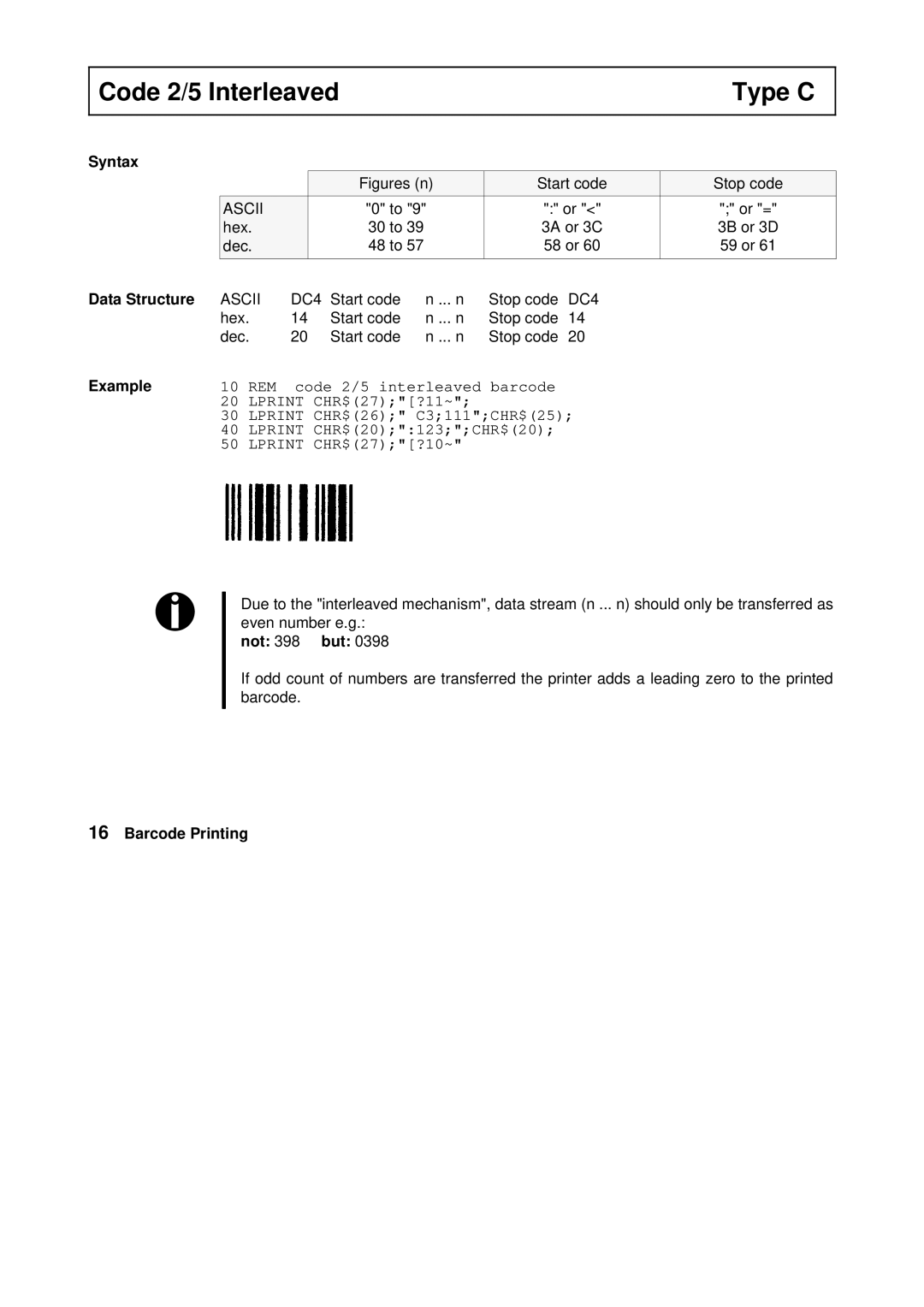
Code 2/5 Interleaved |
|
|
| Type C | ||||
|
|
|
|
|
|
|
|
|
Syntax |
|
|
|
|
|
|
| |
|
|
|
| Figures (n) | Start code | Stop code | ||
| ASCII |
|
| "0" to "9" | ":" or "<" | ";" or "=" | ||
| hex. |
|
| 30 to 39 |
| 3A or 3C | 3B or 3D | |
| dec. |
|
| 48 to 57 |
| 58 or 60 | 59 or 61 | |
|
|
|
|
|
|
|
|
|
Data Structure ASCII | DC4 | Start code | n ... n | Stop code | DC4 |
| ||
| hex. | 14 |
| Start code | n ... n | Stop code | 14 |
|
| dec. | 20 |
| Start code | n ... n | Stop code | 20 |
|
Example10 REM code 2/5 interleaved barcode 20 LPRINT CHR$(27);"[?11~";
30LPRINT CHR$(26);" C3;111";CHR$(25);
40LPRINT CHR$(20);":123;";CHR$(20);
50LPRINT CHR$(27);"[?10~"
Due to the "interleaved mechanism", data stream (n ... n) should only be transferred as even number e.g.:
not: 398 but: 0398
If odd count of numbers are transferred the printer adds a leading zero to the printed barcode.
